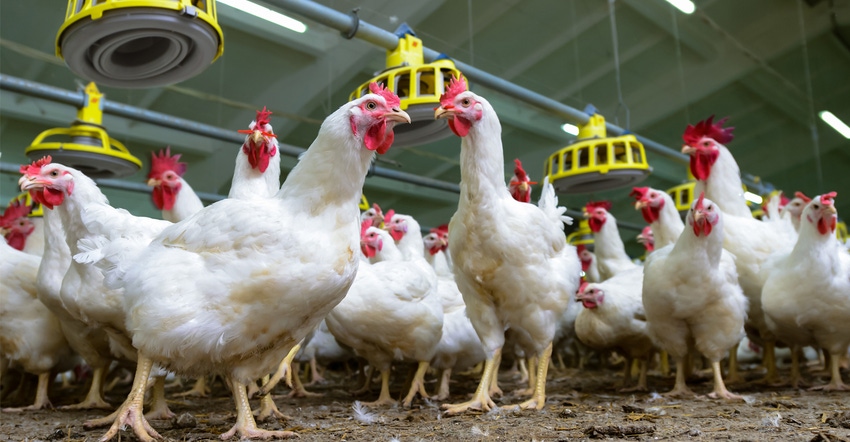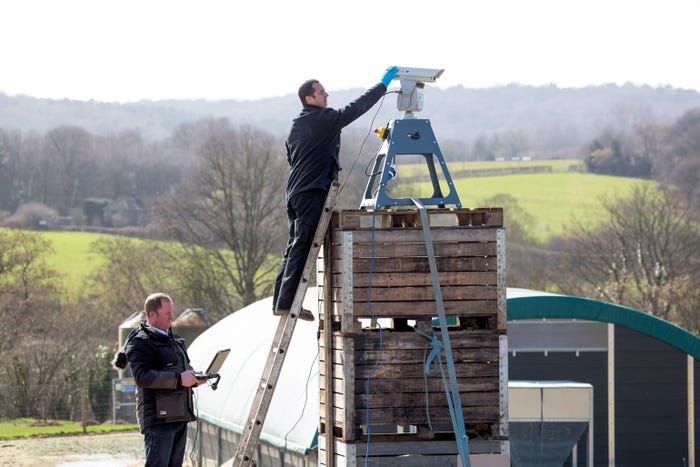March 22, 2017

As of last Wednesday, three avian influenza outbreaks were confirmed: first in Tennessee, then in Wisconsin and most recently in Alabama. The H7N9 strain in Alabama and Tennessee has highly pathogenic viruses, according to tests at USDA’s National Veterinary Services Laboratories in Ames, Iowa. The low-path H5N2 strain was found at a Wisconsin turkey farm along the Mississippi flyway.
“Even though Tennessee [and Alabama] is hundreds of miles from Pennsylvania’s borders, we must be on guard,” cautions Pennsylvania State Veterinarian Dr. David Wolfgang. It’s migration season for wild birds, which can carry this disease, so this is a particularly risky time for commercial operations and backyard flocks. Like Wisconsin, Tennessee and Alabama are within the Mississippi migratory flyway, which connects with the Atlantic flyway.
HPAI H7N9 is a different virus from what affected the United States in 2014-2015, explains Wolfgang. It’s also different from the Eurasian A (H7N9) epidemic currently still ongoing in China. That epidemic, which began last October, has already infected 460 people via bird-to-human contact — but not via yet human-to-human transmission, he adds.
The primary difference between the two viruses is the mortality rate. With low-path avian flu, domesticated poultry may show little or no signs of illness; high-path avian flu is often fatal.
U.S. Centers for Disease Control and Prevention considers the risk to people to be low with these strains. No human infections with these viruses have been detected at this time, confirms Wolfgang. The China strain is a different subtype of high-path H7N9 and is causing human illnesses.
Make a flock plan
Agriculture Department officials from New York to Virginia are strongly urging flock owners to develop a site-specific HPAI flock plan. Pennsylvania’s Agriculture Department offers a generic form on its website to help both large and small poultry owners develop their own flock plans. Flock plans address risk mitigation, depopulation, disposal, and cleaning and disinfection methods.
Premises identification is also important. Premises ID numbers speed state officials’ ability to locate and contact producers in event HPAI is found within a state, and to share any precautions producers may need to take given the proximity of an outbreak to their operation.
Follow these biosecurity measures
Biosecurity plans should focus on cleanliness and isolating domestic birds from those in the wild, explains Wolfgang. Biosecurity vigilance includes these measures:
• Eliminate direct or indirect contact with wild waterfowl and other birds.
• Keep poultry flocks away from any water source possibly contaminated by wild birds.
• Permit only essential workers and vehicles to enter the farm.
• Provide clean clothing and disinfection facilities for employees and any approved farm visitors.
• Thoroughly clean and disinfect equipment and vehicles, including tires and undercarriage, entering and leaving the farm.
• Do not loan or borrow equipment or vehicles from other farms.
• Avoid visiting other poultry farms. If farm visits are necessary, change footwear and clothing before working with your flock.
• Keep livestock, domestic animals, rodents and other pests away.
• Do not bring in birds from slaughter channels, especially live-bird markets.
Aside from preparedness, Wolfgang urges immediately reporting any signs of distress or elevated mortality rates to state officials. A few hours can make a world of difference when it comes to containing this disease. In Pennsylvania, call the Ag Department’s Bureau of Animal Health at 717-772-2852.
For more about HPAI, including biosecurity measures and premises registration, visit the department’s website at agriculture.pa.gov, and click on the “Avian Influenza” box on the right side of the home page.
English try laser-zapping invasive wild birds

LASER GUARD: Laser light, directed by motion detectors, is being experimented with in Great Britain to ward off high-flying, wild birds. (Dutch Bird Control Group image)

The British have been dealing with their own avian influenza outbreaks. One organic, free-range farm in West Sussex is using laser technology to repel wild birds and leave the chickens unaffected.
In brief, the Agrilaser Autonomic automated laser repels unwanted birds without harming wild birds, the chickens and the surrounding environment. Developed by the Dutch Bird Control Group in cooperation with the Technical University of Delft, The Netherlands, it’s purported to be silent and shows effectiveness of 90% to 100% in bird dispersal, according to the company.
Videos of the technology can be found at: Bird control laser repels geese and Agrilaser Autonomic.
You May Also Like




